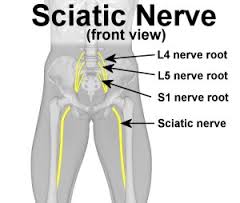What physical therapy helps sciatica?
Having sciatica is not pleasant, but there are many physical therapy methods that can help you deal with it. The article below discusses some of the treatments available with our team of physical therapists and how they can help.
Stretching exercises
Several simple stretching exercises can help to relieve sciatica pain. Performing stretches every day can help to reduce the pain and tension caused by sciatica. These exercises are also great for increasing the range of motion in the spine.
Performing stretches in the morning before getting out of bed can also be helpful. Start with simple stretches for the gluteus maximus muscle, which is located in the hips. They can help to relieve the pain of sciatica by strengthening the muscles in the area.
One of the most effective stretching exercises for sciatica is the knee-to-chest stretch. This stretch can be performed while lying on your back. With both hands, grasp the knee of the leg that you feel pain in and pull it toward your chest. Hold the stretch for 30 seconds. Do this stretch a few times.
Active assisted range of motion
Taking an active role in physical therapy is a great way to get relief from sciatica pain. You can help your physical therapist by performing stretches at home. This will improve your overall flexibility. It’s also a great way to prevent sciatica in the future.
A physical therapist will evaluate your condition and determine whether you require an active or passive range of motion exercise program. The therapist will recommend a program for you that you can do at home. You may also be recommended ice and heat therapies. This will help reduce inflammation and speed up recovery.
The benefits of physical therapy for sciatica include strengthening your core muscles. This will help keep your spine in the correct position and will strengthen the muscles in your lower back. Your posture will also be improved. This will help redistribute weight off the sciatic nerve.
Joint mobilization and dry needling
Using joint mobilization and dry needling in physical therapy for sciatica can help to reduce pain and inflammation. The treatment focuses on the underlying cause of the problem and helps to speed up recovery. It can also prevent future injuries.
Dry needling is used to deactivate trigger points, which are localized areas of muscle pain. The technique involves a thin filament needle that is inserted into the trigger point. This causes a local twitch response, which is associated with improved function.
Trigger point dry needling is used in conjunction with manual therapy techniques. The goal is to reduce pain and inflammation and improve mobility and range of motion.
Ultrasound treatments
Several physical therapy treatments are used to help sciatica, including ultrasound. It is an easy treatment to administer and may be done in the comfort of your own home.
The main benefit of ultrasound therapy is its ability to reduce pain and inflammation. It can also help promote tissue healing.
Other benefits of ultrasound include increased blood flow and circulation. This helps carry away waste and nutrients. It also increases the metabolic rate of tissue cells. In addition, increased blood flow can help muscles respond better to massage.
The best way to determine whether ultrasound therapy is right for you is to speak to your doctor. Some studies show that it can be very effective for treating chronic pain. It may also be helpful for healing muscle tears or strains.
Lumbar traction
Several studies have investigated the effectiveness of lumbar traction in physical therapy for sciatica. The studies examined a variety of traction parameters, including methods and dosage. The results have been conflicting. However, many clinicians continue to assert the clinical effectiveness of traction.
Some studies have indicated that traction therapy can decrease the size of herniated disc material. Others have indicated that traction can reduce nerve root compression symptoms. However, it is not clear whether lumbar traction can improve the short term outcome of sciatica.
In addition, the effects of traction may differ based on force and time. The optimal force for traction is yet to be determined.
Transcutaneous electrical nerve stimulation (TENS)
Using a TENS unit for sciatica can be a great way to relieve pain. The TENS unit uses low voltage electrical currents to stimulate nerves. In turn, endorphins, the body’s natural painkillers, are released.
In most cases, the pain relief you get from TENS is immediate. Depending on your condition, it may last as long as you are using the device.
TENS units are small, battery-operated devices. They are generally easy to use. However, they can also cause irritation to your skin. For this reason, you should use them only under the guidance of a medical professional.
TENS can help reduce inflammation. This reduces the pain you feel and also helps you maintain an active lifestyle. However, TENS units should not be used on infected or radiation-treated areas.
Physical Therapy in our area
We can help if you have a pinched or injured nerve and live in the area. We offer the best physical therapy to all our patients.
Call us today to schedule your first appointment. We’ll start communicating with you or your insurance company so that you know the exact cost for your physical therapy. Let’s get going so that you can quickly heal that pinched nerve!
If you have any questions or concerns, please feel free to contact us.



